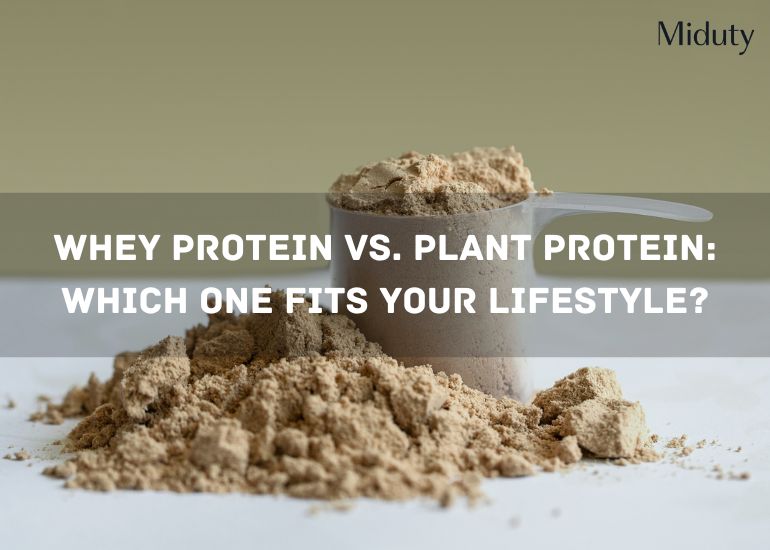
Should you take Glucosamine for Joint Pain?
Whether you have occasional aches and tightness or a chronic condition like osteoarthritis, you may wonder if a supplement could help soothe your painful joints or even prevent the pain from worsening.
As a health advisor, I have encountered many clients with various health concerns. One of the most common issues that people seek my advice on is joint pain. Recently, I had a client who was particularly concerned about her joint pain and wanted to know if glucosamine for joint pain would help alleviate her symptoms.
If you're seeking a natural solution to relieve joint discomfort, you've probably heard of glucosamine. This supplement is derived from shellfish and is thought to help relieve joint pain and inflammation.
Does it, however, work? Is it also safe to use? In this blog post, we'll look at the science behind glucosamine for joint pain and if it's worth using in your joint pain management plan.
Let's start with a definition of glucosamine and how it's meant to work.
Glucosamine is a naturally occurring chemical present in joint cartilage. It is essential for the health and integrity of our joint tissue. Our bodies may manufacture less glucosamine as we age or suffer joint degeneration, resulting in greater discomfort and inflammation.
It can't be found in most foods, so if you want to boost your glucosamine consumption, you should consider a supplement. Shellfish shells are commonly used to make supplements.
How does Glucosamine Work in Relieving Joint Pain?
According to research published in the National Library of Medicine, glucosamine has anti-inflammatory properties and can help in increasing the synovial fluid (grease) in the joints.
Another research published by the National Institutes of Health revealed that glucosamine sulfate slowed the progression of osteoarthritis and reduced the need for knee replacement surgery.
Let’s have a closer look at the benefits of using Glucosamine for treating Joint Pain.
- Glucosamine Supports Healthy Joints

Glucosamine is found in your body naturally. One of its primary functions is to promote the proper growth of articular cartilage, which is a smooth white tissue that surrounds the ends of your bones as they meet to form joints.
Articular cartilage, in conjunction with the lubricating liquid known as synovial fluid or commonly known as grease, reduces friction and enables bones to move without discomfort across one another.
More specifically, glucosamine is thought to encourage the formation of certain chemical molecules, such as collagen, which are critical structural components of articular cartilage and synovial fluid.
- Glucosamine Helps in Lowering Inflammation
Glucosamine lowers inflammation by decreasing the activity of specific enzymes involved in the formation of inflammatory chemicals known as prostaglandins and leukotrienes. Cells create these molecules in response to damage or infection, and they contribute to the inflammation and pain associated with diseases such as osteoarthritis.
Glucosamine may assist to lessen joint inflammation and discomfort by reducing the formation of prostaglandins and leukotrienes. Furthermore, glucosamine may increase the formation of glycosaminoglycans, which are a key component of joint cartilage. This can assist to enhance the structure and function of the joint, lowering inflammation and pain even further.
- Glucosamine Assists in Mineral Absorption
Furthermore, it has been discovered that glucosamine increases the quantities of calcium-binding protein in the body. Calcium-binding protein is required for calcium absorption in the intestines and calcium transport to the bones.
Glucosamine can also help to improve bone density and lower the risk of osteoporosis, a disorder characterized by weaker bones and a higher risk of fractures, by improving mineral absorption, particularly calcium.
Does Glucosamine for Joint Pain Work?
Yes, Glucosamine is beneficial for treating Joint Pain especially when you’re suffering from Osteoarthritis and Rheumatoid Arthritis.
Research published in the Journal of Arthritis and Rheumatology states glucosamine supplementation is linked to considerable pain reductions and improvements in joint function. The researchers found that glucosamine is a safe and efficient therapeutic choice for knee osteoarthritis symptoms.
Another research published in the National Library of Medicine revealed glucosamine supplementation was linked to significant reductions in disease activity, joint pain, and morning stiffness in people suffering from Rheumatoid Arthritis.
What is the best Glucosamine Supplement for Joint Pain?
Choosing the best glucosamine supplement for joint pain can be difficult because there are so many various formulations and dosages on the market.
Although you can obtain a glucosamine supplement on its own, choosing one with other ingredients like chondroitin, MSM, or turmeric may provide extra advantages for joint health.
It should be noted that Glucosamine and Chondroitin are very big molecules in nature and their absorbability in the body is very poor. The size of glucosamine molecules may limit their ability to pass through the intestinal wall and be absorbed into the bloodstream. Larger molecules may have difficulty crossing the intestinal wall and may be excreted from the body without being absorbed.
Build Joints Back contain a highly improved formulation of Glucosamine and Chondroitin, as well as collagen made from a Natural Egg Cell Membrane, that absorbs quickly in the body and is essential for relieving joint discomfort and inflexibility. It also contains low density hyaluronic acid which moves out waste material from your joint cells and fills in nutrients in it.
What are the Alternative Treatments for Joint Pain?
While supplements like glucosamine for joint pain can help you manage and treat your pain efficiently, here are some dietary and lifestyle modifications you can do at home for joint pain alleviation. You can also incorporate an intake of certain joint vitamins to keep your joints healthy.
- Taking An Anti-Inflammatory Diet

Turmeric, one of the most popular anti-inflammatory foods, contains a compound called curcumin, which has been shown to have anti-inflammatory properties.
Other foods that are anti-inflammatory in addition to turmeric include:
Fish and legumes contain lean protein. On the other hand, processed foods, refined carbohydrates, sugar, and foods high in saturated or trans fats, should be avoided in an anti-inflammatory diet.
- Consuming Omega 3 Rich Diet
In persons with arthritis, omega-3 fatty acids may help to reduce joint pain and improve joint function by lowering inflammation. Omega-3 fatty acids may also help to maintain joint health by reducing the rate at which cartilage, the tissue that cushions joints, degrades.
Foods that contain Omega 3 include:
- Chia seeds
- Soaked seeds such as flaxseeds
If you are a non-vegetarian, seafood, especially salmon, is one of the best sources of omega-3.
- Exercise
Exercise might seem like the last thing you want or need to do if you have knee arthritis considering the amount of pain you are experiencing.
On the other hand, regular exercise is one of the best at-home therapies for arthritis and can help the majority of patients with knee osteoarthritis.
You can begin by simply engaging in low-impact activities like walking and progressively add activities like yoga and stretches as time goes on.
You can also enroll in my Joint Building Program which contains a number of videos to guide you on what exercises to do and how to do them safely to get relief from Joint Pain.
- Improving the Gut Health
Almost 90% of the health issues in our bodies start from the gut.
Both good and harmful bacterial colonies can be found in our stomachs. The beneficial bacteria help in proper food digestion, produce vital vitamins, and regulate the development of cells that line our lungs, intestines, and other organs. They assist in teaching our immune system to distinguish between germs that won't harm us and ones that will.
When bad bacteria take over the gut, they rupture the wall of the gut to extend their stay. The small holes allow undigested particles of food and disease microorganisms from the digestive system to enter the circulation, resulting in a leaky gut. A leaky gut is one of the major contributors to autoimmune disorders such as Rheumatoid arthritis.
Improve gut health through dietary changes, the use of probiotics such as idli, dosa, yogurt, and other therapies can reduce inflammation and relieve joint pain.
Want to find out more ways to take care of your joint health at home. Read this blog about effective home remedies for arthritis that actually work.
Final Words
- Glucosamine is a substance that occurs naturally in the body and is necessary for the health and integrity of our joint tissue.
- Glucosamine contains anti-inflammatory characteristics and has been demonstrated in studies to help ease joint pain and inflammation, slow the course of osteoarthritis, and lessen the need for knee replacement surgery.
- Glucosamine is also useful for maintaining healthy joints, reducing inflammation, and enhancing mineral absorption. However, selecting the best glucosamine supplement for joint pain can be difficult due to the variety of formulations and dosages available on the market.
- While supplements like glucosamine can help alleviate and manage joint pain, it's also crucial to make dietary and lifestyle changes for joint pain relief.
- Maintaining joint health can be accomplished by eating an omega-3-rich diet, taking particular joint vitamins, and taking part in low-impact workouts.
- You can manage joint discomfort, enhance mobility, and have a higher quality of life when you combine these measures with the usage of supplements such as glucosamine for joint pain.








